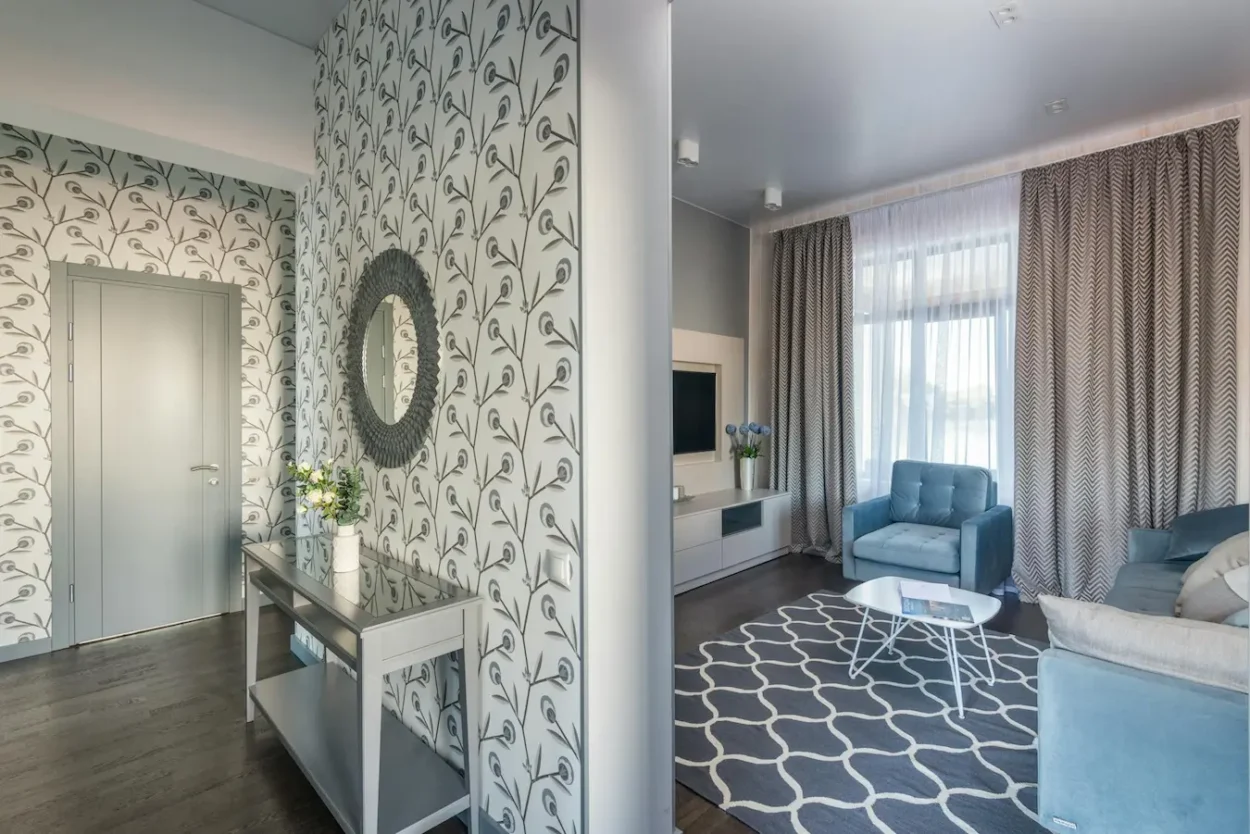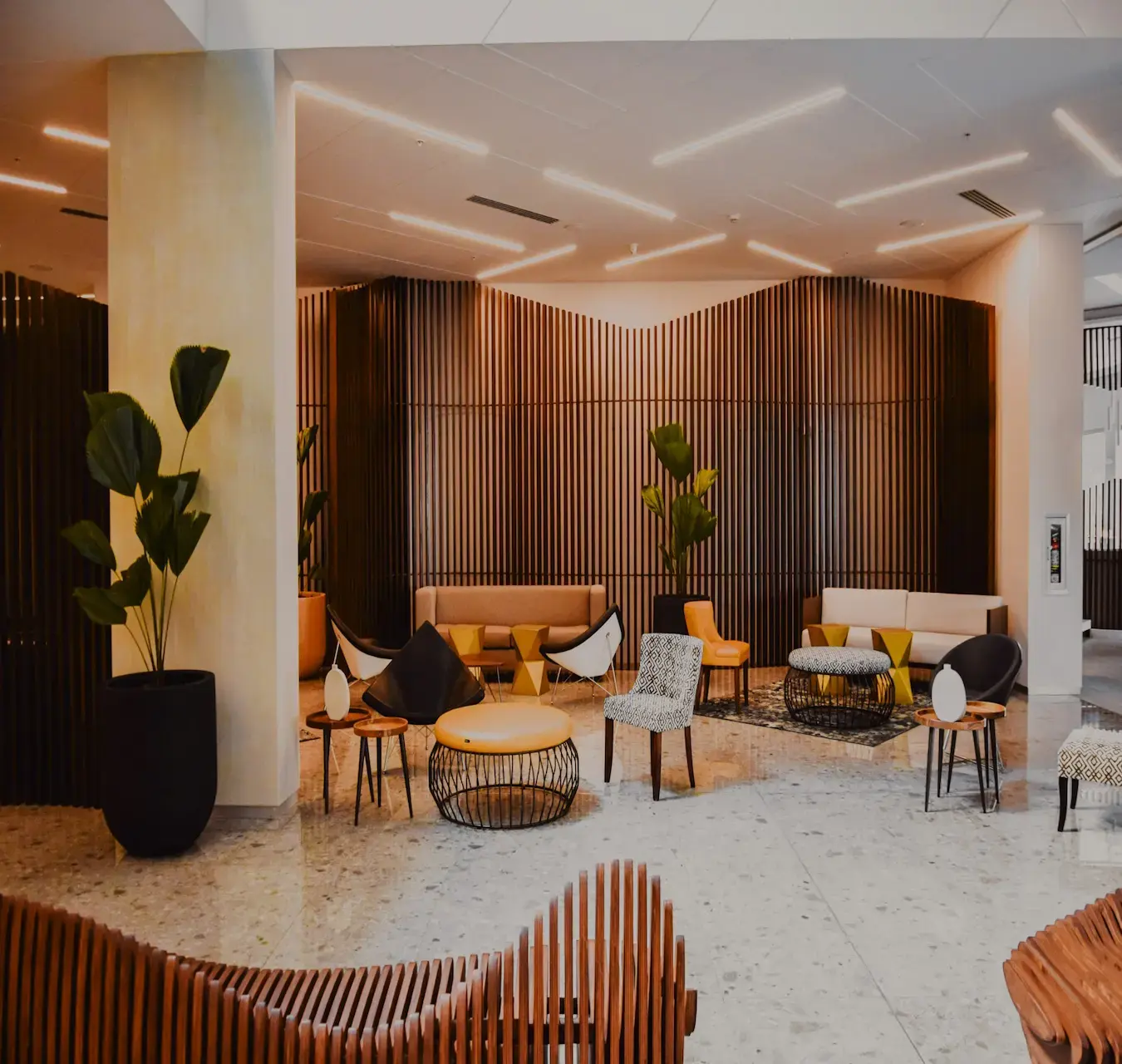Introducing Curvspace Entryways
Entryways have long served as more than just entrances to homes; they are intermediate spaces that set the tone for the entire residence, providing a welcoming threshold that enhances both architectural beauty and functionality. This article explores how Curvspace inspires the transformation of entryways through unique designs, practical storage solutions, smart technology integration, customizability, and sustainable materials. Discover how Curvspace Entryways can transform typical entrances into stylish and efficient environments that enrich your living space.
Reader Disclosure
Jump to:
What is an Entryway?
An entryway is the first area people encounter when entering a home. It sets the tone for the rest of the house, reflecting the homeowner’s style and personality. This space includes elements like doors, flooring, and lighting, aiming to create a welcoming and functional environment.
Essential features often encompass practical components and aesthetic details:
- Doors: The front door stands as the focal point. Choices range from classic wood to modern glass, each offering unique visual appeal.
- Flooring: Durable materials like tile, wood, or laminate withstand high traffic while enhancing aesthetics.
- Lighting: Proper illumination from fixtures like chandeliers or recessed lighting ensures safety and adds warmth.
Including storage solutions such as coat hooks or shoe racks can keep the area organized. Entryways vary in design but all share the common goal of making a strong first impression.
The History of Entryways
Entryways have evolved significantly over centuries. Initially, in ancient civilizations like Egypt and Mesopotamia, entryways served as grandiose structures symbolizing power, wealth, and security. They often featured massive doors, elaborate carvings, and protective elements.
During the Medieval period in Europe, entryways became more functional and protective. Castles and fortresses had fortified gates and drawbridges designed to deter invasions. These elements showcased the importance of defense.
In the Renaissance era, entryways began to reflect aesthetics and artistry. Architecture from this period, such as Italian palazzos and French châteaux, included grand entry portals with intricate stonework and ornamentation. They served as statements of grandeur and cultural significance.
The 19th century saw the rise of residential entryways in American homes. Influenced by Victorian architecture, these entryways featured decorative doors, transoms, and sidelights. They emphasized elegance and domestic comfort.
Modern entryways focus on functionality, technology integration, and sustainability. Today’s designs often include automated doors, energy-efficient materials, and smart security systems.
Throughout history, entryways have mirrored societal priorities, from security and defense to art and technology.
Purpose of Entryways
Entryways create a functional transition between the outdoors and indoors, ensuring practical and aesthetic benefits. They serve as buffers, protecting interiors from external elements like dirt, rain, and cold air through effective design elements like doormats and storm doors.
Storage solutions like hooks and cabinets keep belongings organized. Entryways typically feature areas for coats, shoes, and bags, promoting a clutter-free home environment.
Entryways enhance security with designated spaces for locks, peepholes, and smart doorbells. These features allow homeowners to manage access and monitor entry points effectively.
They establish initial impressions, reflecting the homeowner’s style and setting the tone for the interior design. Thoughtful decor, lighting, and paint choices contribute to a welcoming atmosphere in the home.
Types of Entryways
Foyer Entryways
Foyer entryways serve as the initial space within a home. They often feature coat closets, benches, and decorative elements. Homeowners use foyers to create first impressions with design elements like rugs, chandeliers, and artwork.
Vestibule Entryways
Vestibules act as a small, enclosed area between the outer door and the interior. They provide insulation, helping to regulate indoor temperatures and improve energy efficiency. Vestibules often include storage for shoes and umbrellas and offer a buffer against weather elements.
Mudrooms
Mudrooms offer practical entry points often connected to kitchens or garages. Homeowners use mudrooms for storage solutions like cubbies, hooks, and lockers for footwear, outerwear, and sports equipment. These spaces emphasize functionality to manage everyday clutter.
Portico Entryways
Portico entryways feature a roof supported by columns. Porticos provide shelter from rain and sun, enhancing curb appeal. They often include decorative elements like lanterns, potted plants, and seating areas.
Grand Entryways
Grand entryways typically include expansive spaces with high ceilings and dramatic design elements like sweeping staircases and elaborate light fixtures. These entryways prioritize luxury and grandeur to make impressive statements for intersection spaces.
Side Entryways
Side entryways offer additional access points often used by family members rather than guests. They frequently lead to secondary areas like kitchens or mudrooms. Side entryways provide convenience and reduce traffic through the main entrance.
Sliding Door Entryways
Sliding door entryways provide seamless indoor-outdoor transitions. Homeowners opt for sliding doors to maximize natural light and space. These entryways are popular for patios and backyards, enhancing connectivity to outdoor living areas.
French Door Entryways
French door entryways use dual doors with glass panes to create elegant transitions between spaces. They enhance natural light and visual connection. French doors are common in traditional and contemporary designs, offering both style and functionality.
Contemporary Uses of Entryways
Modern entryways serve multiple functions, blending design, practicality, and advanced features. These intersections spaces
aren’t just transitional but integral to a home’s overall flow and feel.
Smart Home Integration
Smart technology enhances entryways with convenience and security. Motion sensors, smart locks, and video doorbells provide greater control and monitoring. For instance, a smart lock allows me to grant access remotely, while a video doorbell offers real-time visuals of visitors.
Custom Storage Solutions
Contemporary entryways often include bespoke storage solutions. Custom cabinetry, built-in benches, and shoe racks maximize space and keep areas tidy. A built-in bench with concealed storage under the seat combines seating and stowing, ensuring a clutter-free look.
Multifunctional Spaces
Entryways today are multifunctional, serving as more than just a passage. Combining a mini-mudroom with a seating area provides both a space for removing shoes and a spot to welcome guests. An entryway with a charging station and drop zone for keys, mail, and gadgets ensures everything is organized.
Aesthetic Enhancements
Modern design trends emphasize aesthetics with functionality. Stylish lighting fixtures, statement mirrors, and artistic wall decor elevate the look of entryways. A pendant light can serve as a focal point, while mirrors reflect light and make spaces appear larger.
Sustainable Design
Entryways increasingly adopt eco-friendly materials and designs. Reclaimed wood, sustainable textiles, and energy-efficient lighting are common. Using recycled materials for flooring or cabinetry not only reduces environmental impact but also offers unique, rustic charm.
Personalization
Personal touches make each entryway unique. Custom art, family photos, and personalized welcome mats reflect individual taste and personality. Displaying a custom piece of art can make a bold statement and immediately convey a sense of identity.
Functional Entry Mats
Functional elements like entry mats with style and utility provide a cleaner home. Mats made with durable, absorbent materials trap dirt and moisture, preserving indoor cleanliness. A mat with a stylish design ensures it complements the overall decor.
Technology-Based Solutions
Technology advancements increase entryway functionality beyond smart integration. Automated lighting systems, climate control for temperature regulation, and integrated speakers for ambient music create a more welcoming environment. Automated lights activate as I enter, providing a well-lit path without manual switches.
These contemporary uses highlight entryways’ evolution and adaptability, making them essential, versatile spaces in modern homes.

Modern Trends in Entryway Design
Modern entryways combine style, functionality, and technology. They serve as the home’s first impression. Current trends focus on creating welcoming, practical spaces.
Multifunctional Spaces
Entryways now often double as mudrooms, coat storage, or even mini-offices. Designers incorporate benches with under-seat storage, hooks for bags, and cubbies for shoes.
Smart Home Integration
Technology plays a big role in modern entryway design. Smart locks, video doorbells, and automated lighting systems enhance convenience and security. These elements connect to smart home ecosystems, allowing remote control via smartphones.
Custom Storage Solutions
Custom-built storage solutions maximize space and organization. Built-in cabinets, floating shelves, and optimized closet systems keep entryways clutter-free.
Aesthetic Enhancements
Designers use bold colors, statement lighting, and unique materials to create visually striking entryways. Feature walls, large mirrors, and art pieces add character and style.
Sustainable Design
Sustainability is paramount in modern design. Eco-friendly materials like reclaimed wood, recycled metals, and energy-efficient lighting reduce environmental impact. Green entryways often include plant walls or indoor gardens.
Personalization
Personalization transforms entryways into unique spaces. Homeowners choose bespoke elements, such as custom furniture, personalized nameplates, and family photo displays. These touches reflect personality and enhance the welcoming feel.
Technology-Based Solutions
Innovative technology solutions streamline entryway functionality. Automated systems manage lighting, temperature, and security. Smart mirrors offer real-time information like weather updates or calendar reminders.
Curvspace ensures these modern trends in entryways are stylish, practical, and tailored to individual needs. The blend of design, functionality, and technology creates a harmonious and efficient home entrance with inspiring design possibilities.
Cultural Diversity in Entryways Design
Entryways around the globe reflect diverse cultural traditions and design philosophies. For instance, Japanese genkans symbolize simplicity and cleanliness with dedicated shoe removal areas. Scandinavian entryways emphasize minimalism and functionality. Indian homes often feature vibrant, ornate doorways as a sign of hospitality and celebration.
In Mediterranean regions, entryways blend warm colors and rustic textures. North African designs integrate arabesque patterns and intricate details. Latin American entryways often showcase vibrant hues and artisanal craftsmanship. These diverse inspirations highlight how cultural influences shape the design of entryways.
Native American designs incorporate natural elements like wood and stone. Traditional Chinese entryways use symmetry and balance, representing harmony. Middle Eastern homes feature grand arches and intricate mosaics, reflecting wealth and artistry.
Understanding cultural diversity in entryways provides a holistic perspective on design possibilities. It underscores the importance of personalization and respect for tradition in creating welcoming and meaningful home entrances.
People Also Ask
What is the significance of entryways in a home?
Entryways are pivotal in making a positive first impression, reflecting the homeowner’s style, and offering functionality. They set the tone for the rest of the house and can significantly enhance the home’s aesthetic appeal and practicality.
How can I make my entryway more attractive?
To make an entryway more attractive, incorporate decor elements like mirrors, artwork, and lighting. Adding plants and custom storage solutions can also enhance the space’s functionality and visual appeal.
What are Curvspace Entryways?
Curvspace Entryways inspires new possibilities by blending aesthetic appeal with sustainable elements. Through Curvspace’s innovative concepts, discover how customized solutions can transform entryways into welcoming and functional spaces, enhancing both style and practicality.
What types of entryways are commonly found in homes?
Common types of entryways include foyers, mudrooms, and grand entryways. Each serves unique functions, from welcoming guests to providing storage for everyday items.
How have entryways evolved over time?
Entryways have evolved from simple welcoming spaces to multifunctional areas that integrate smart home features, custom storage, and aesthetic enhancements, catering to modern lifestyles and preferences.
What are some current trends in entryway design?
Current trends focus on multifunctional spaces, smart home integration, custom storage, aesthetic enhancements, sustainable design, and personalized elements to create stylish and practical entrances.
How do entryways reflect cultural influences?
Entryways often reflect cultural traditions and design philosophies. For example, Japanese genkans symbolize simplicity, while Scandinavian entryways emphasize minimalism, showcasing the diversity in entryway design globally.
What role do entryways play in welcoming guests?
Entryways serve as the initial welcoming space for guests, setting the atmosphere for the home. They provide a first impression and can communicate the homeowner’s style and hospitality.
Can entryways be both stylish and functional?
Yes, entryways can beautifully blend style and function. By incorporating custom storage, smart home features, and personalized decor, they can be both welcoming and highly practical.
What are some tips for integrating smart home features into entryways?
Install smart lighting, security cameras, and smart locks to enhance the entryway’s functionality. These technologies can provide convenience, security, and aesthetic improvements to the space.
Conclusion
Entryways have evolved from simple thresholds to multifunctional spaces that reflect our personal style and embrace modern technology. They serve as the first impression of our homes, blending design with practicality. By exploring Curvspace inspiration ideas from innovative concepts, you can integrate custom storage, smart home features, and sustainable designs to create entryways that are both welcoming and efficient. Whether you prefer a minimalist Scandinavian look or a more personalized approach, there’s a design solution to enhance your entryway’s aesthetic and functional appeal.
Show & Tell
We’d love to hear your thoughts about these ideas! Simply click the link to head over to your favorite platform and add your comments about this post there. We’d like to know about your insights, questions, or just saying hi.
More Curvspace Topic Pages
Disclosure
Our content is reader-supported. This means if you click on some of our links, then we may earn a commission. Commissions do not affect our editor’s opinions or evaluations. Learn more about our editorial process.

About the Editorial Staff
The Curvspace editorial team comprises a diverse group of experts on intermediate and threshold spaces in homes and workplaces. Architects and interior designers, civil engineers and artists, environmental and behavioral psychologists, sociologists and anthropologists. All collaborate to create helpful content, that explores the full potential of these often-overlooked areas to enhance our daily lives.


